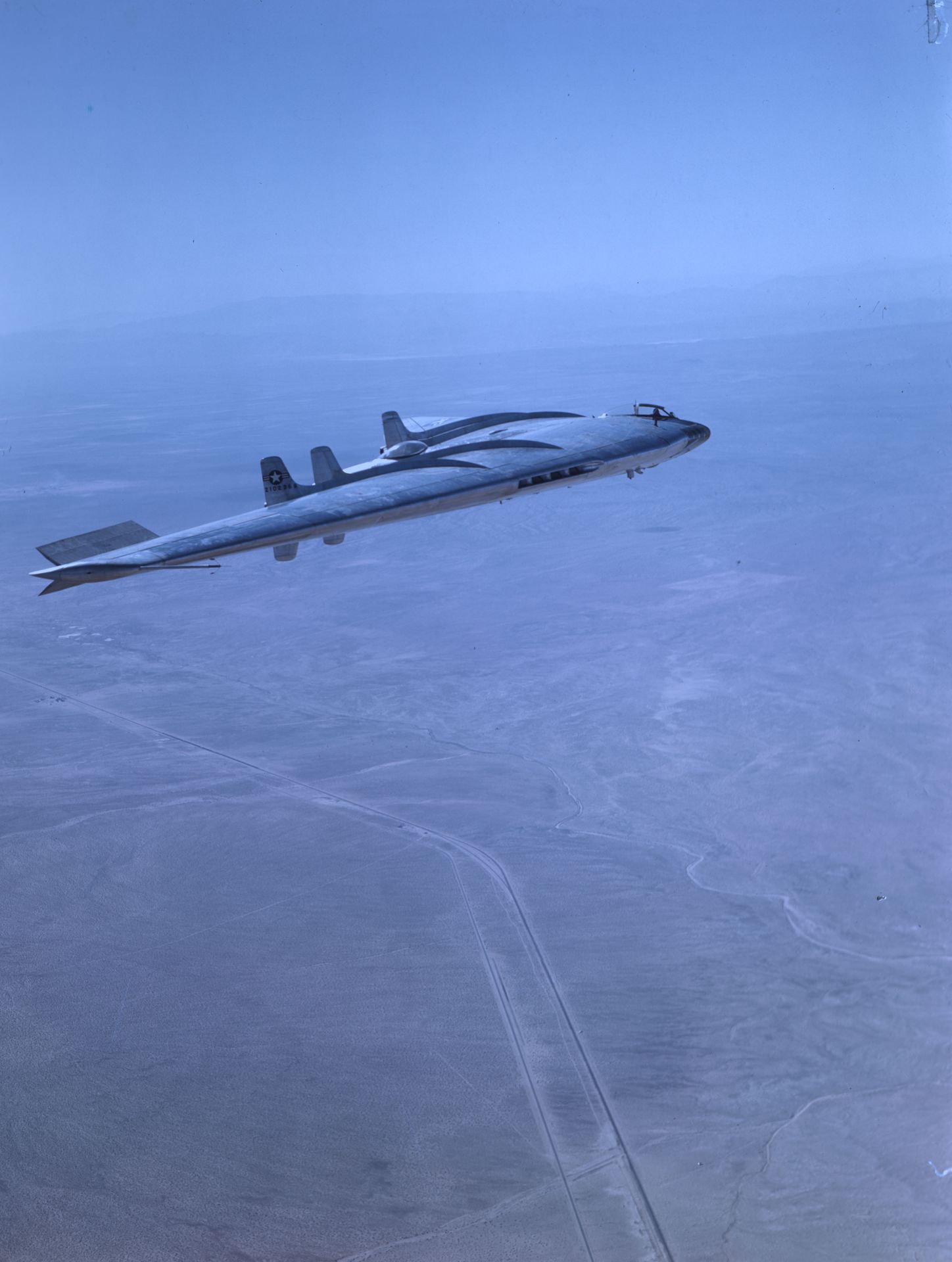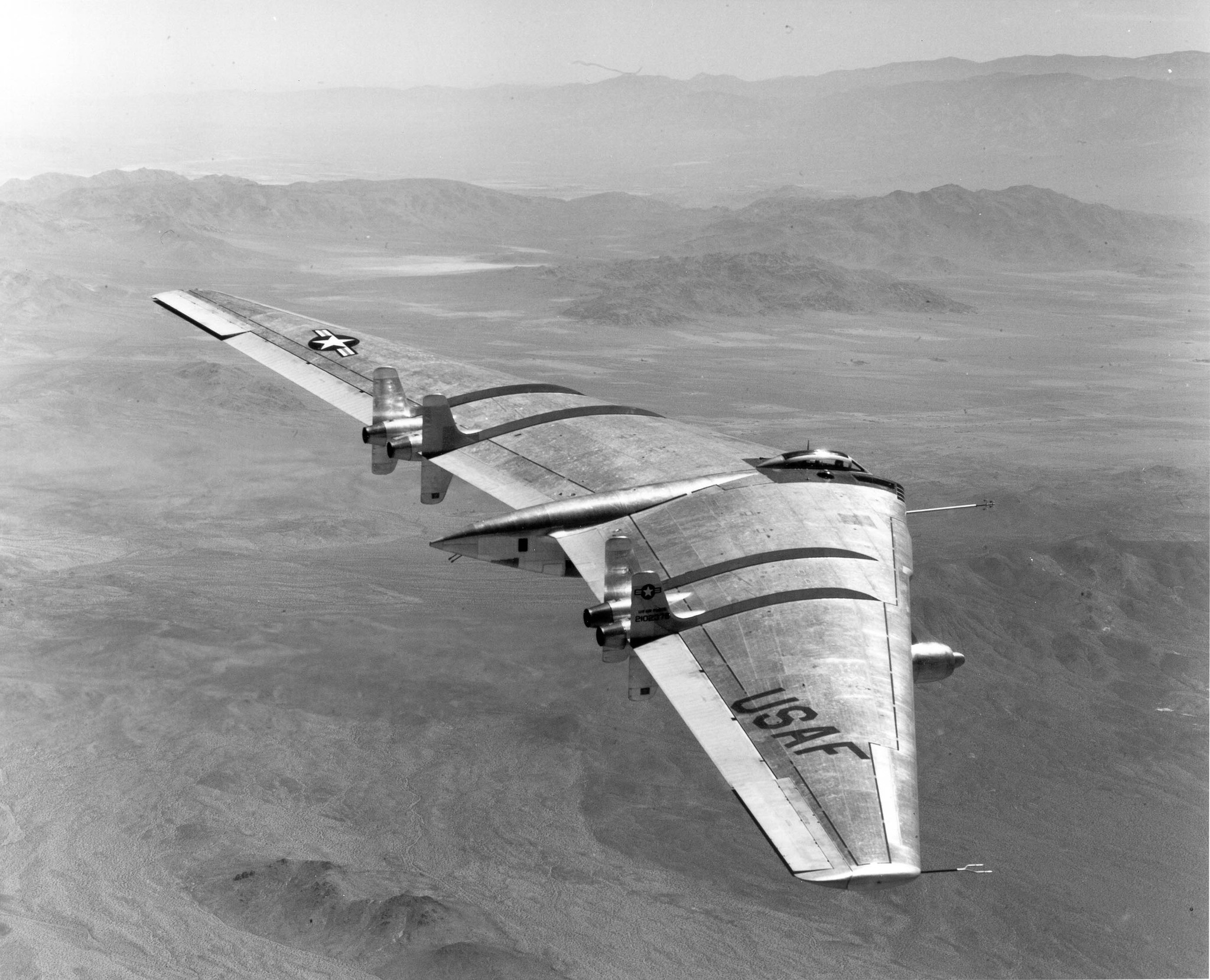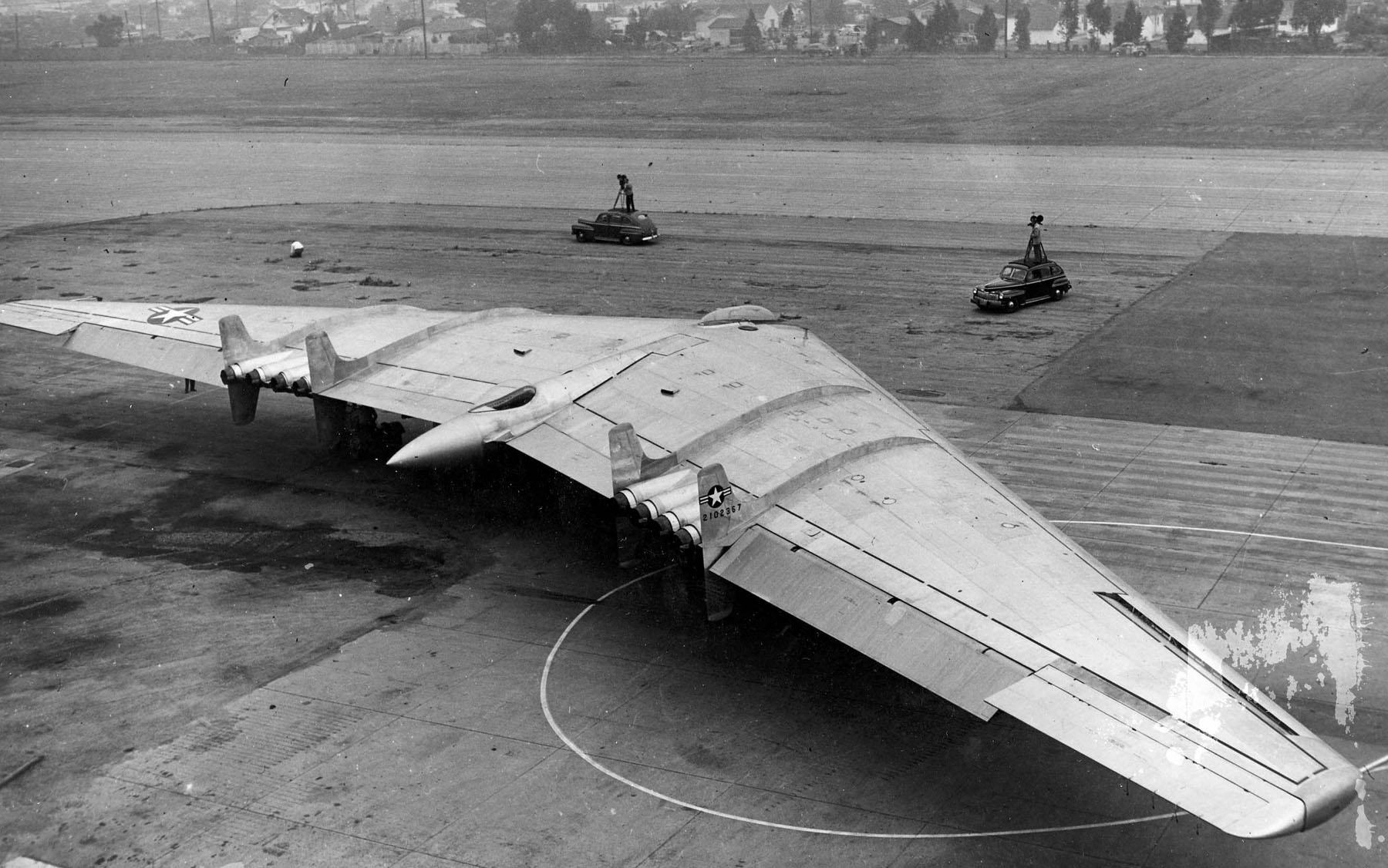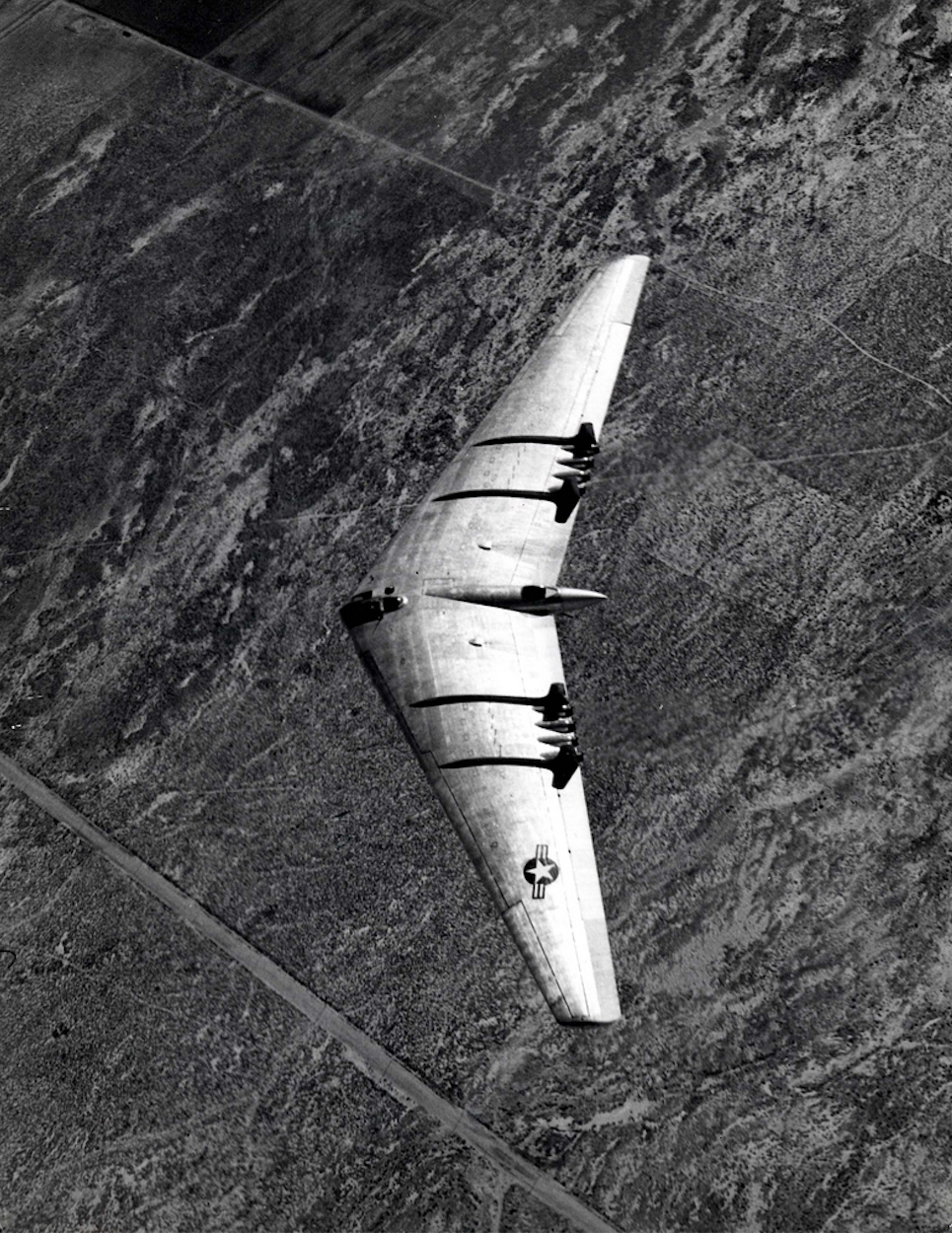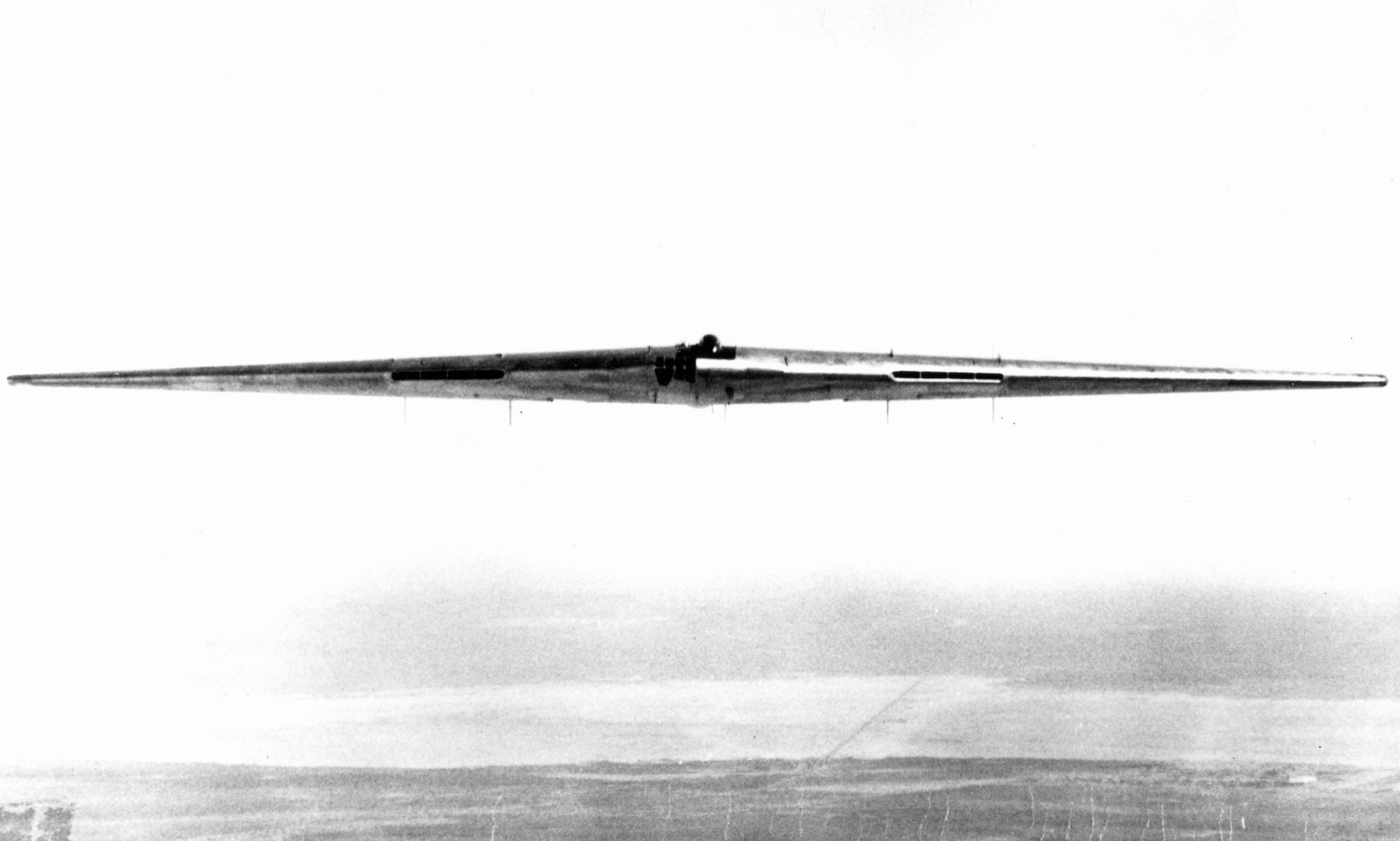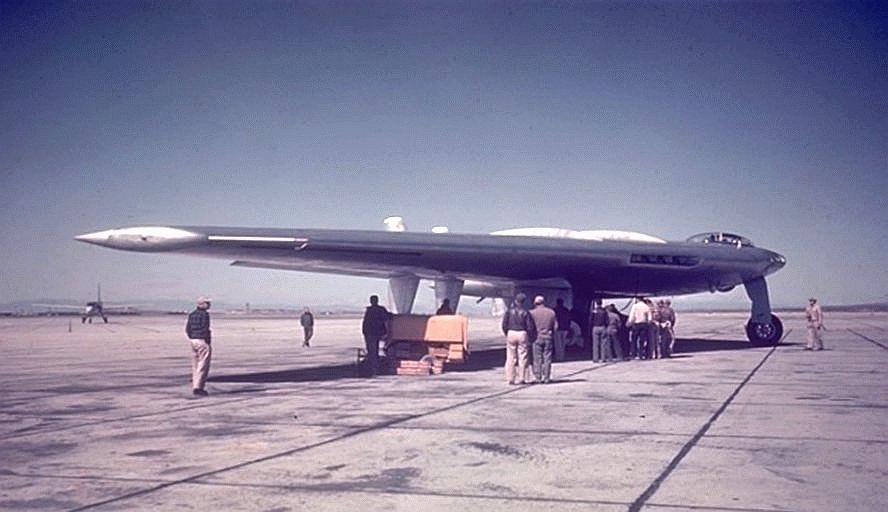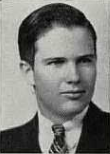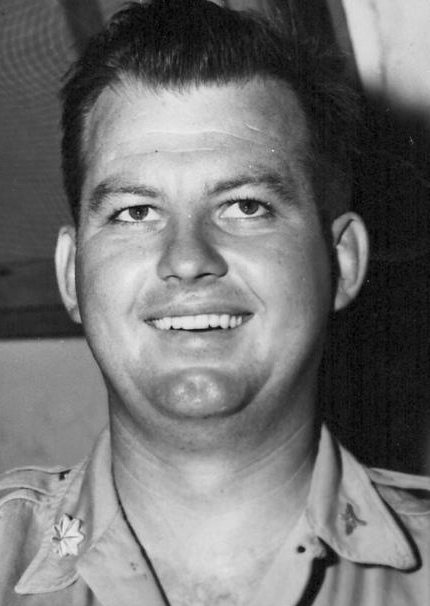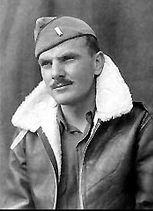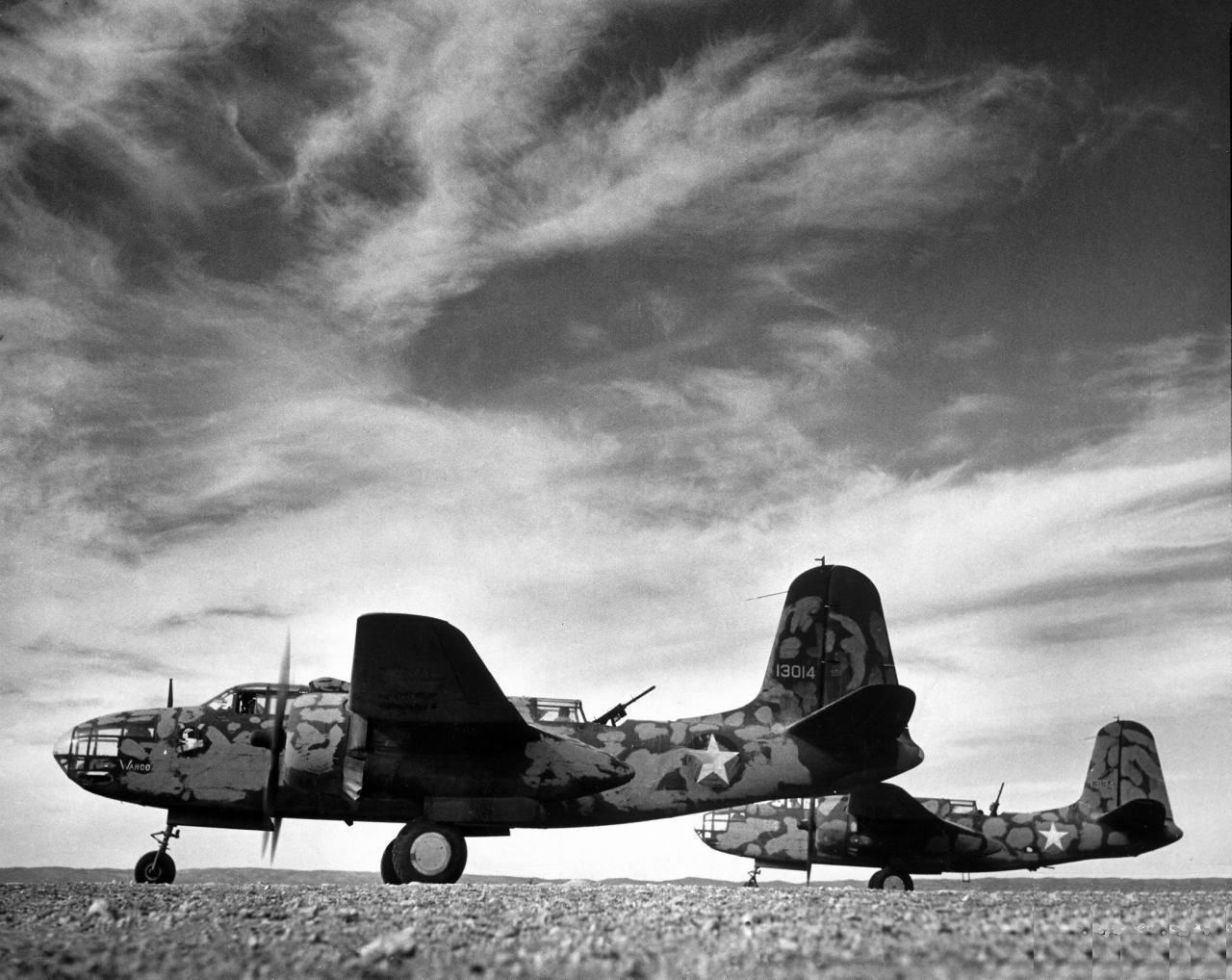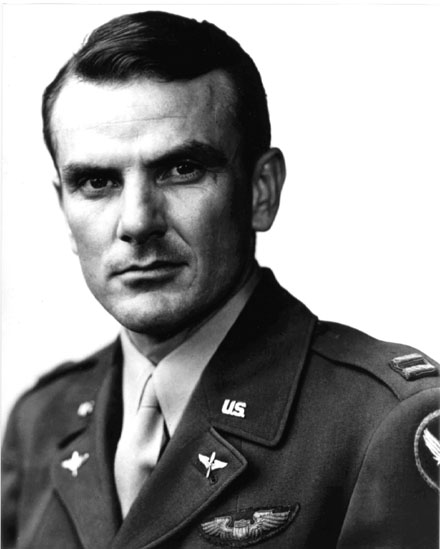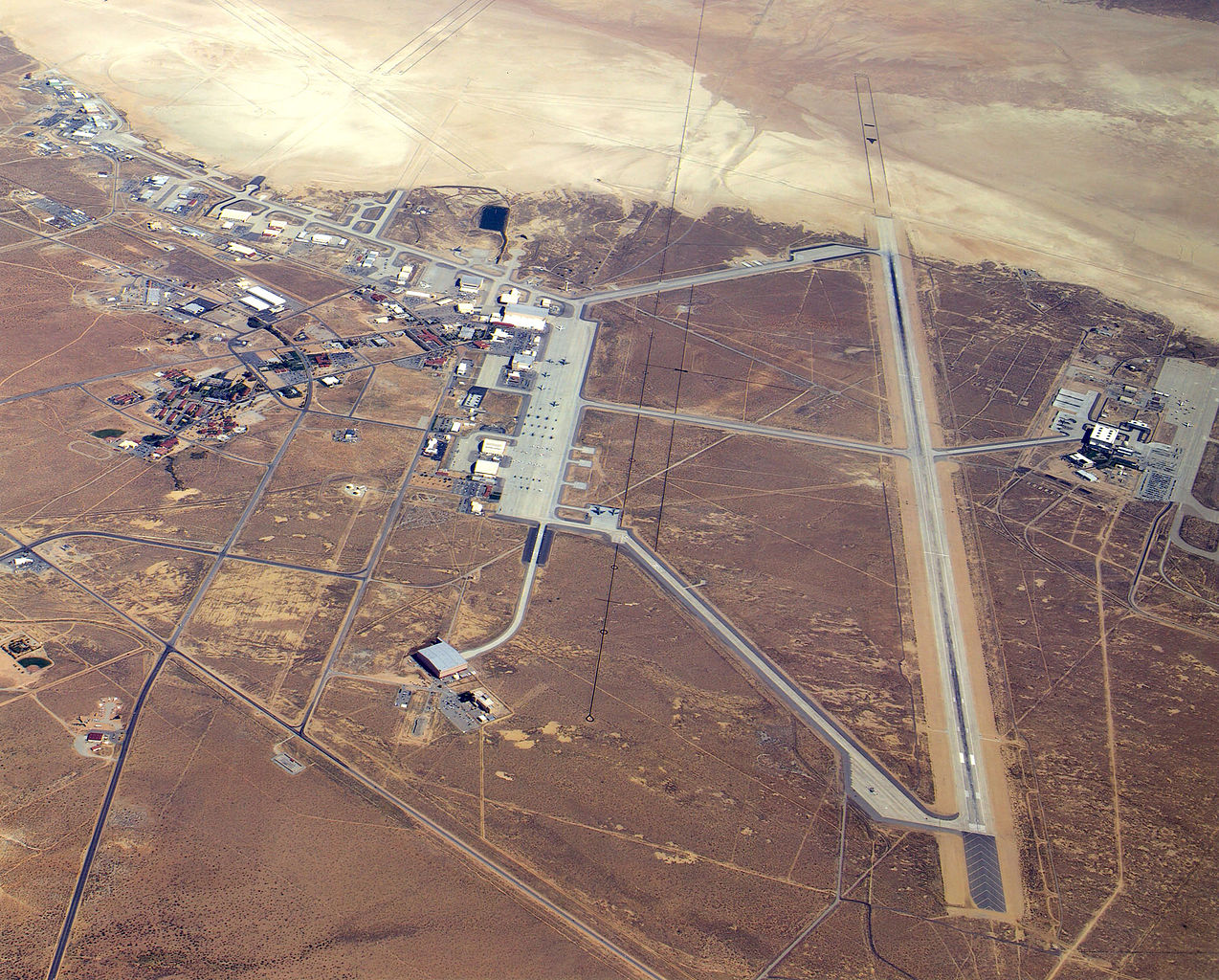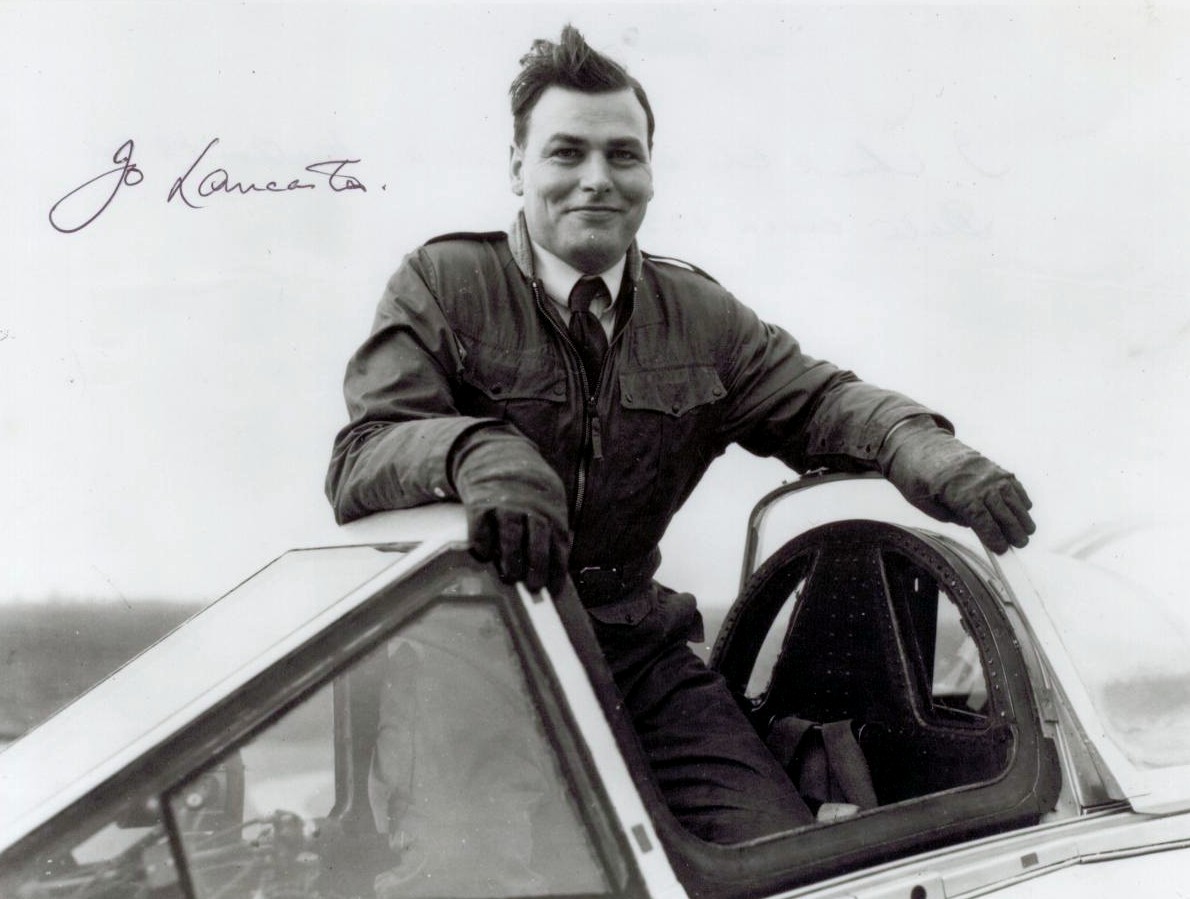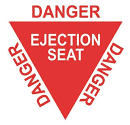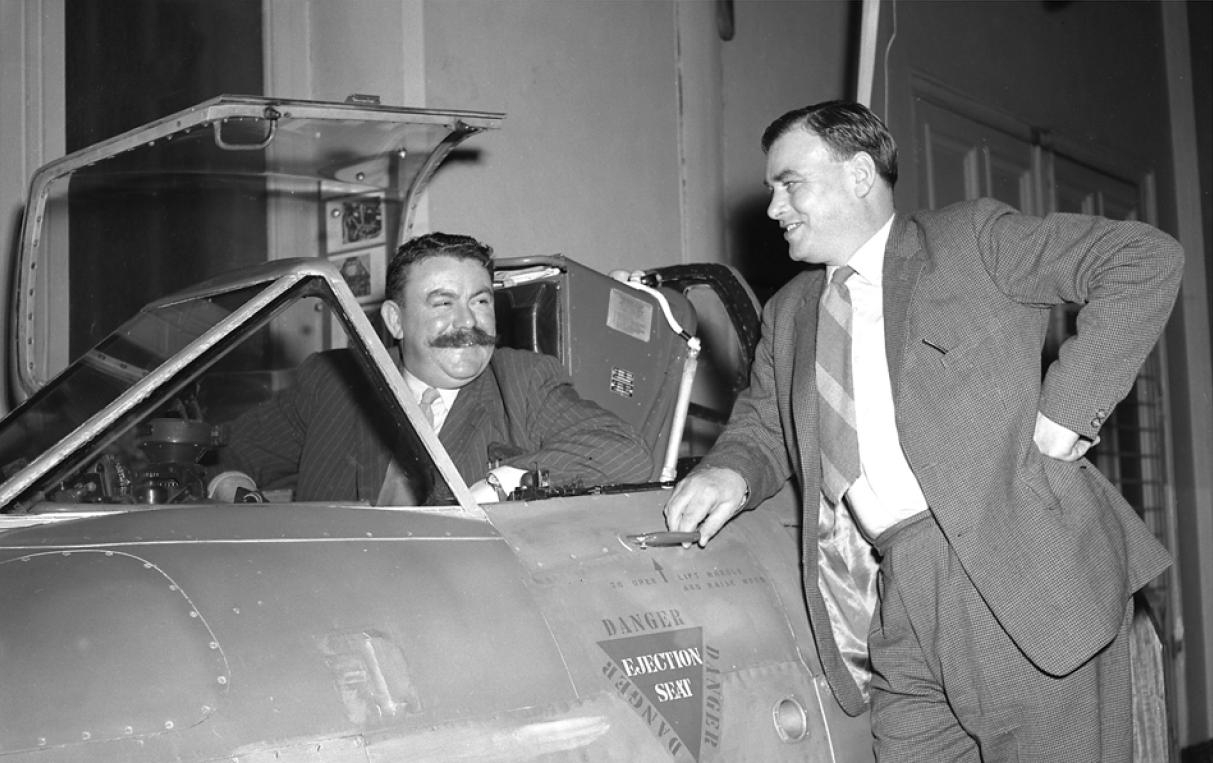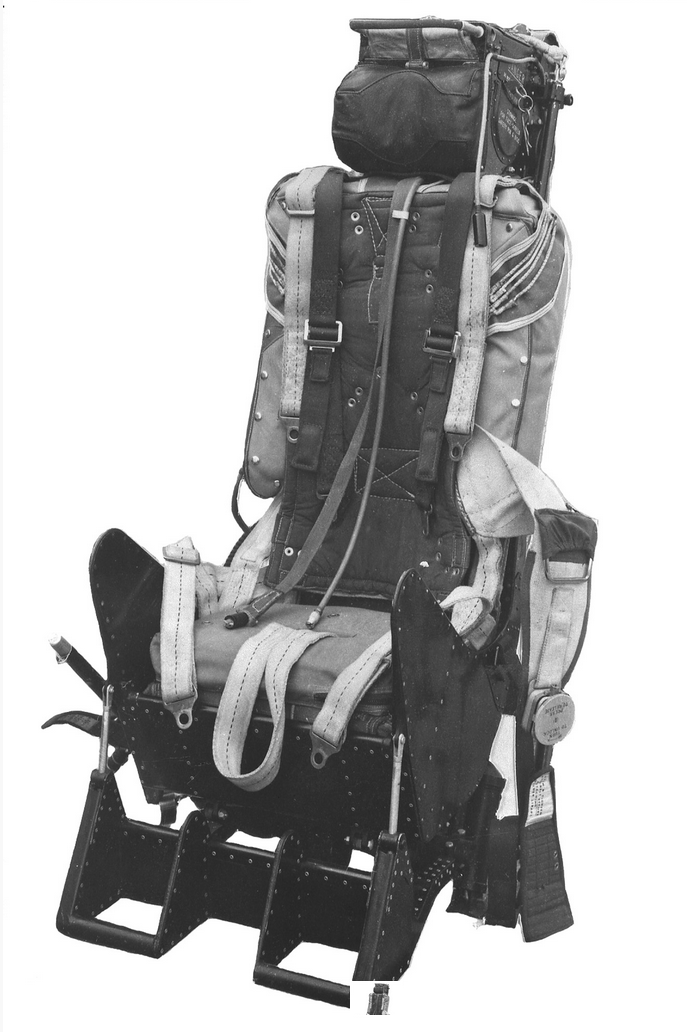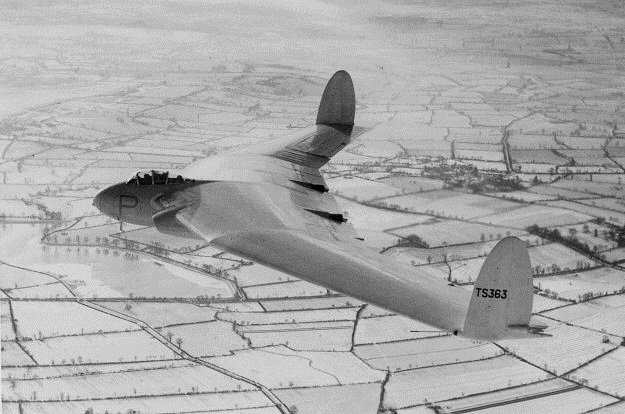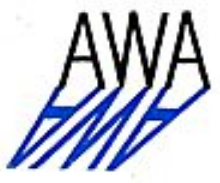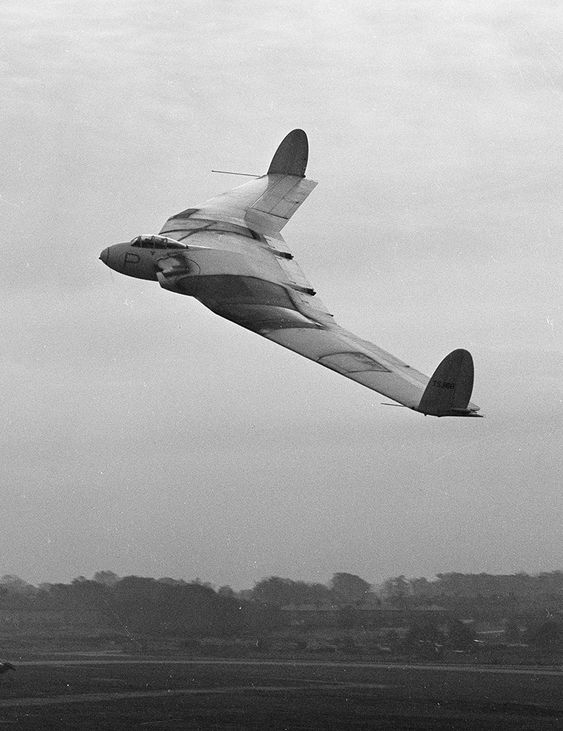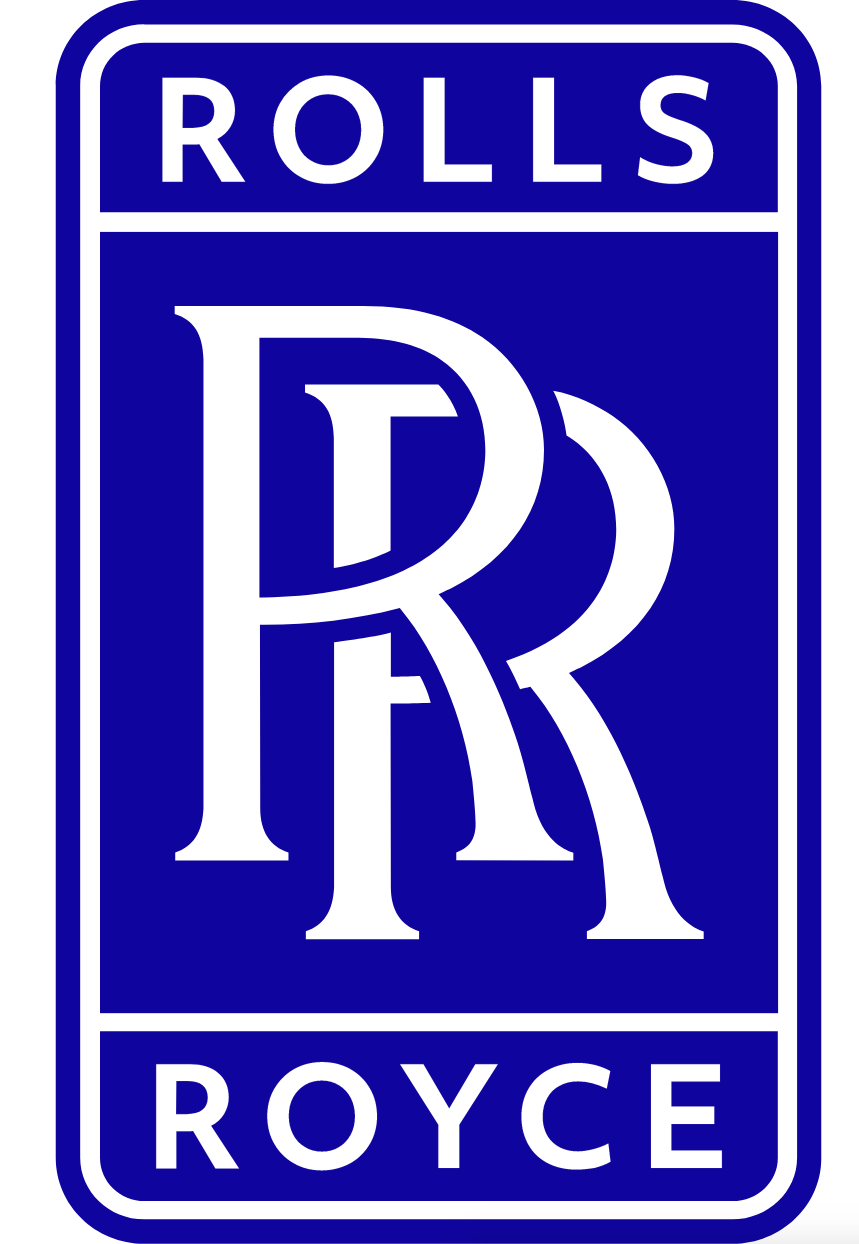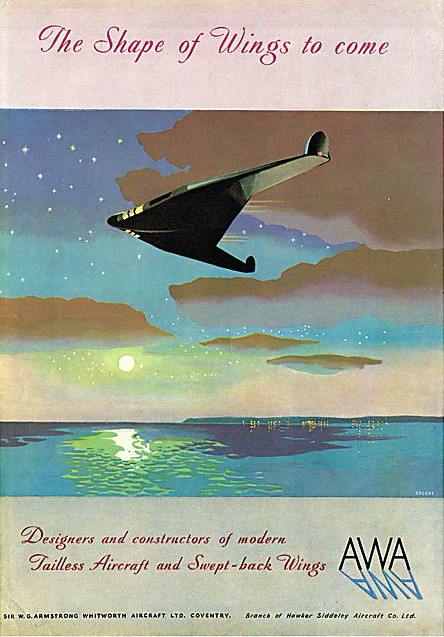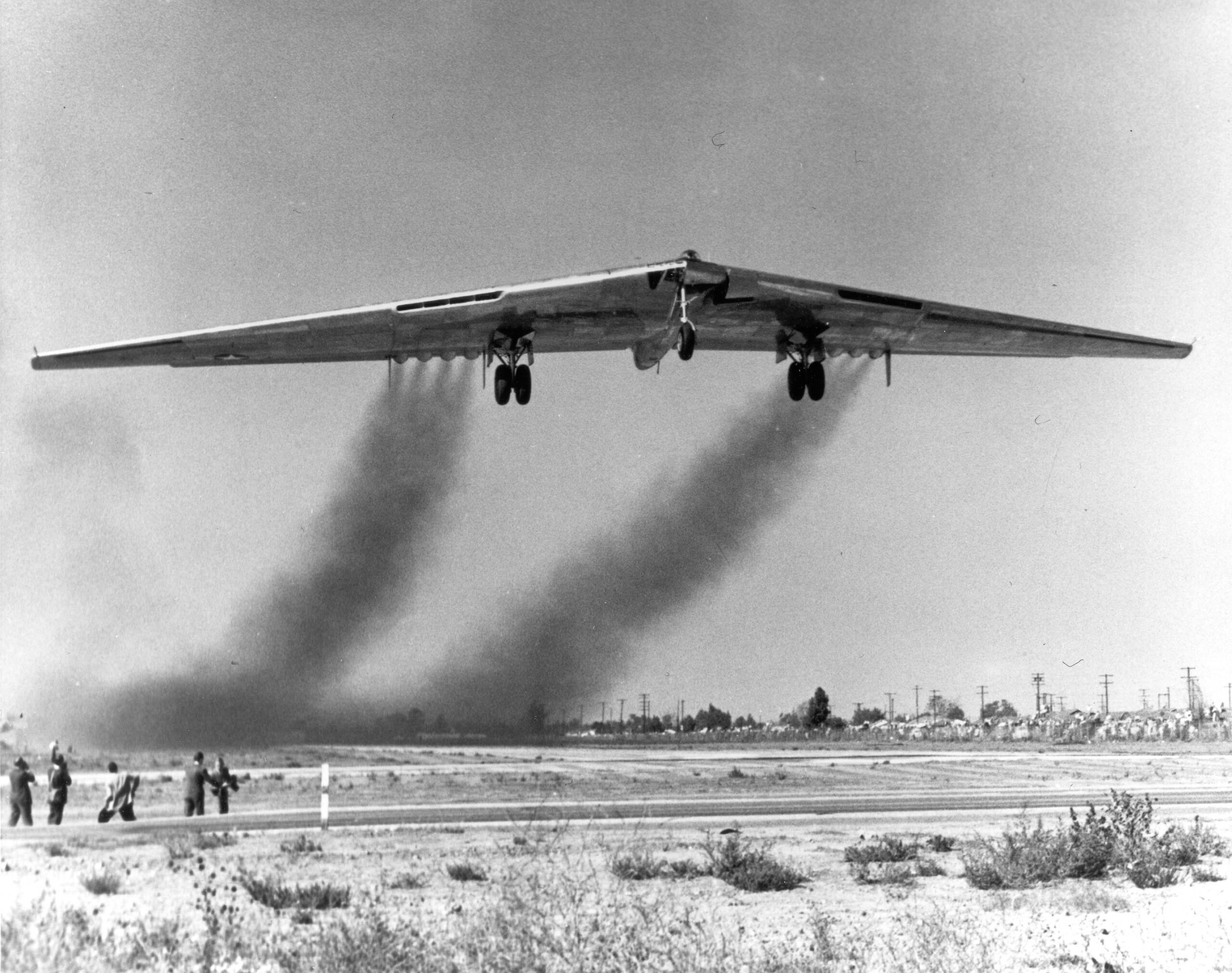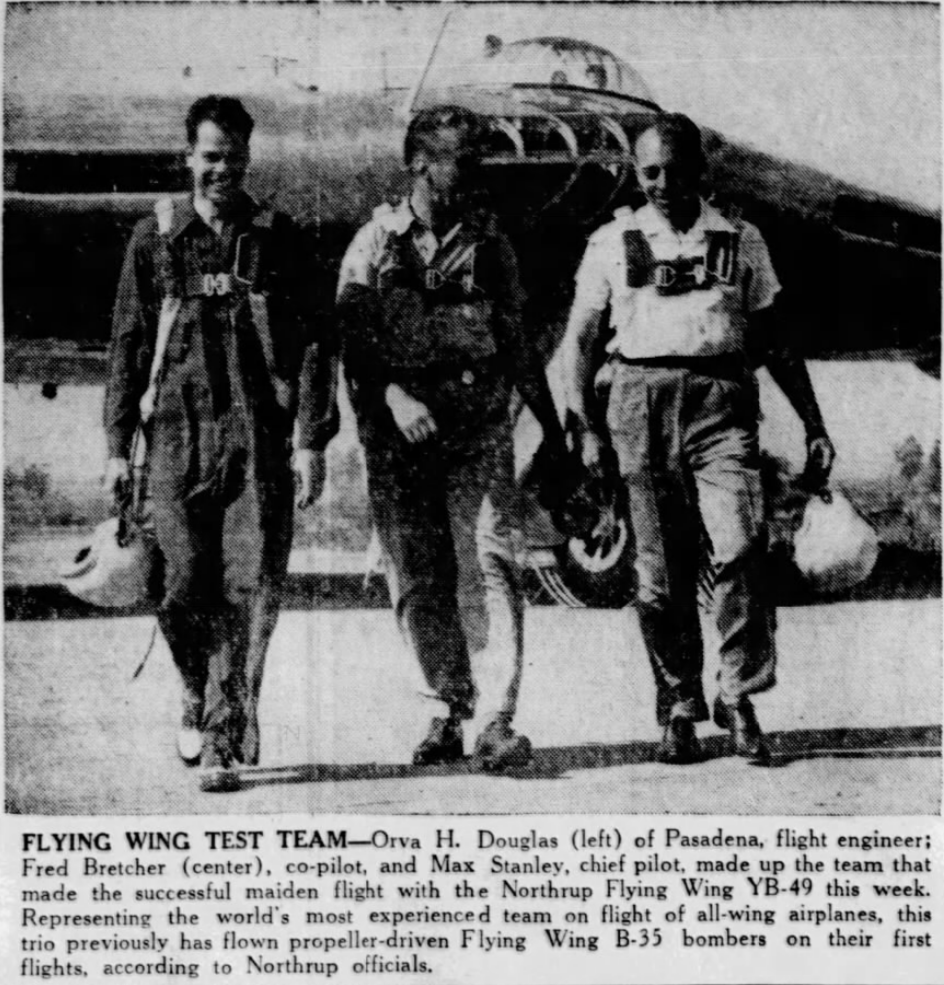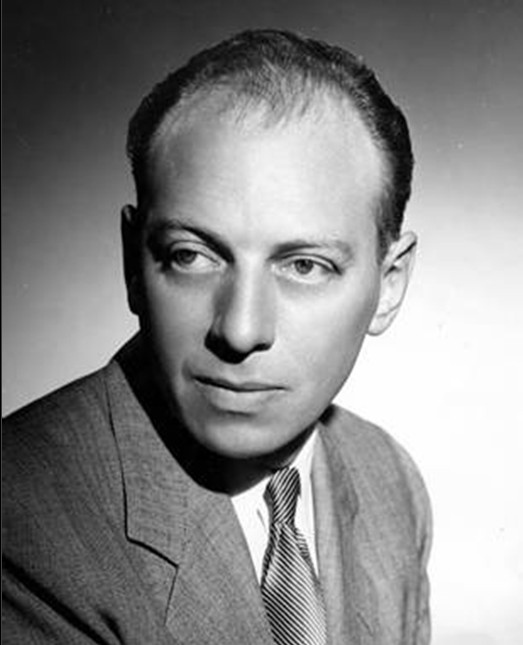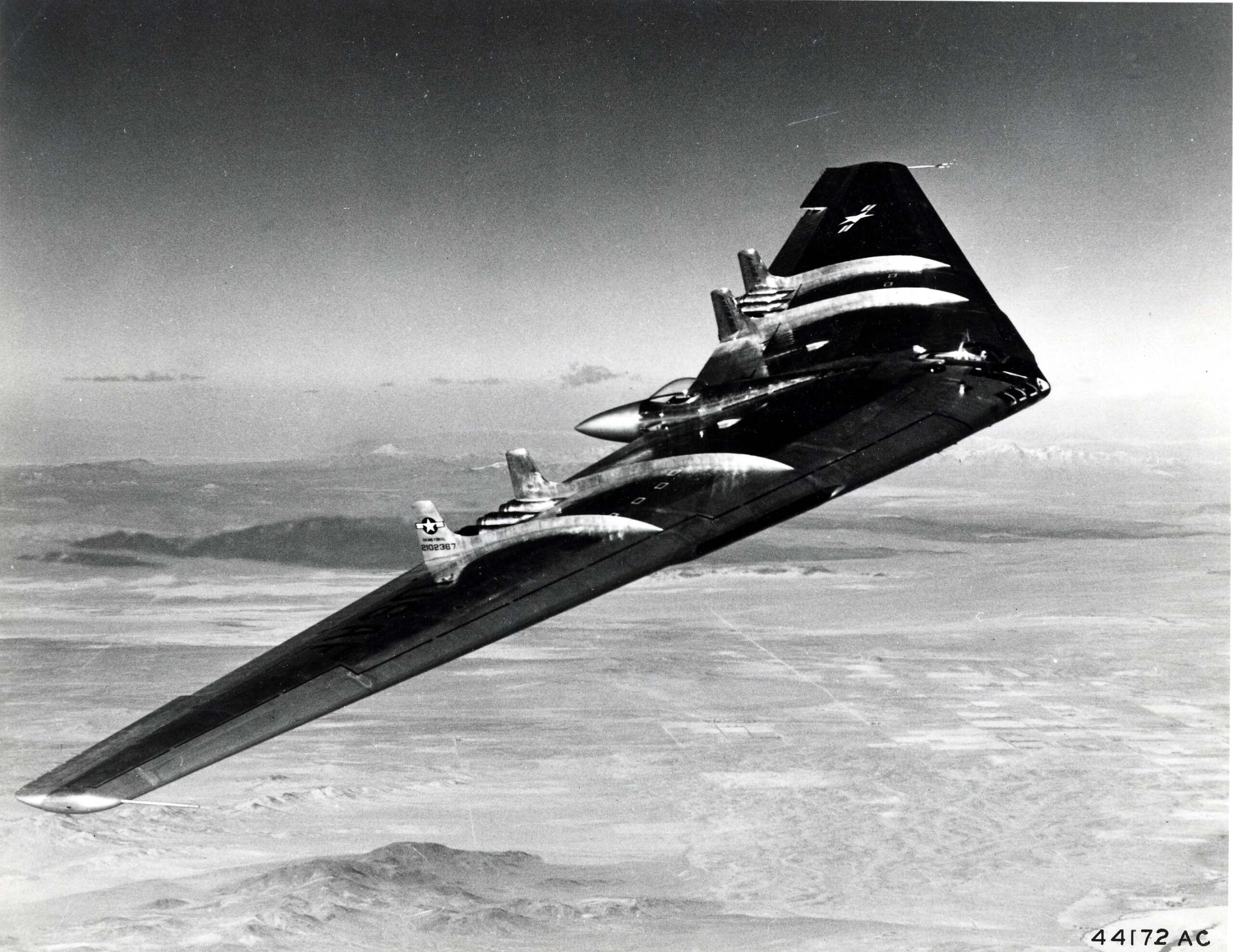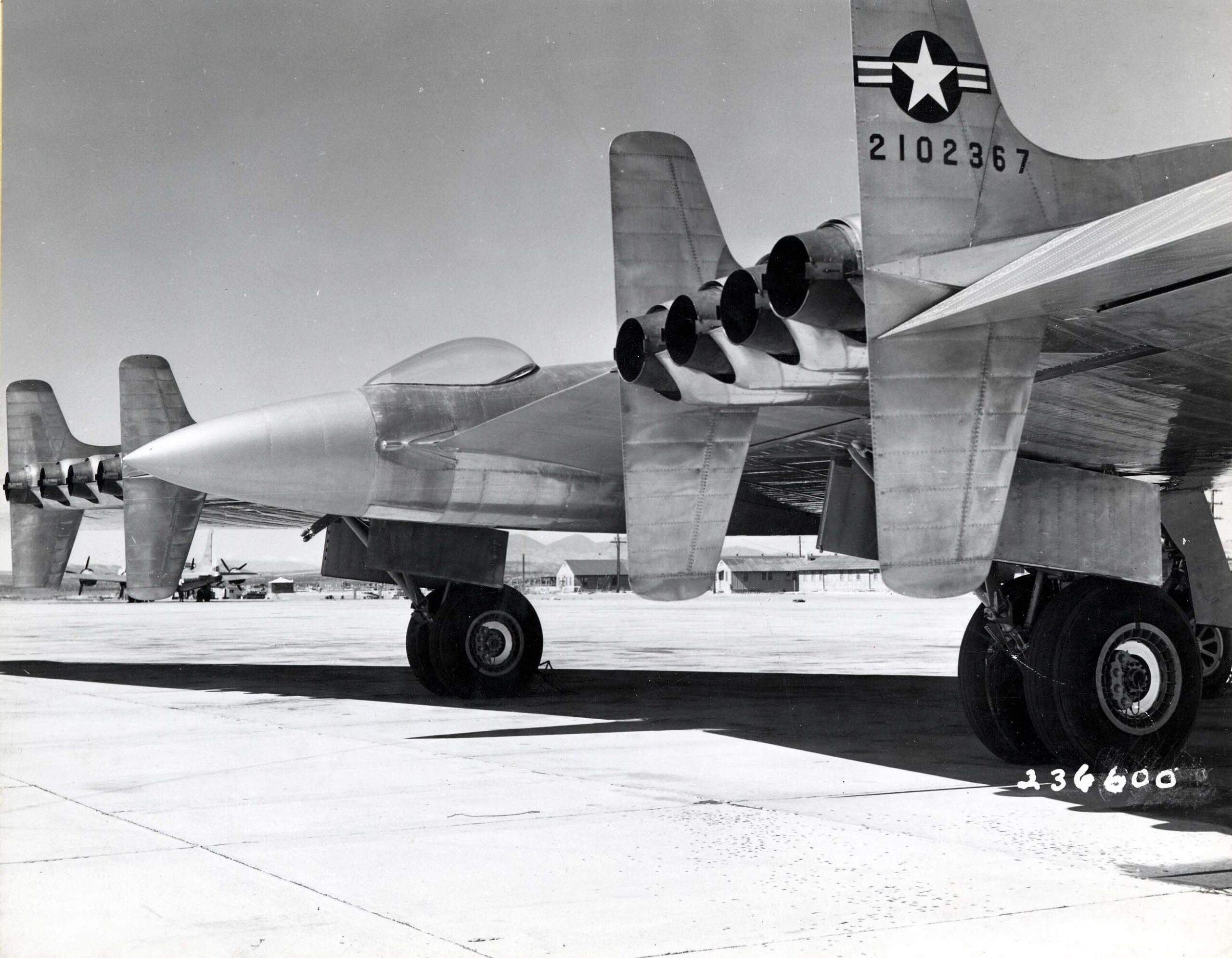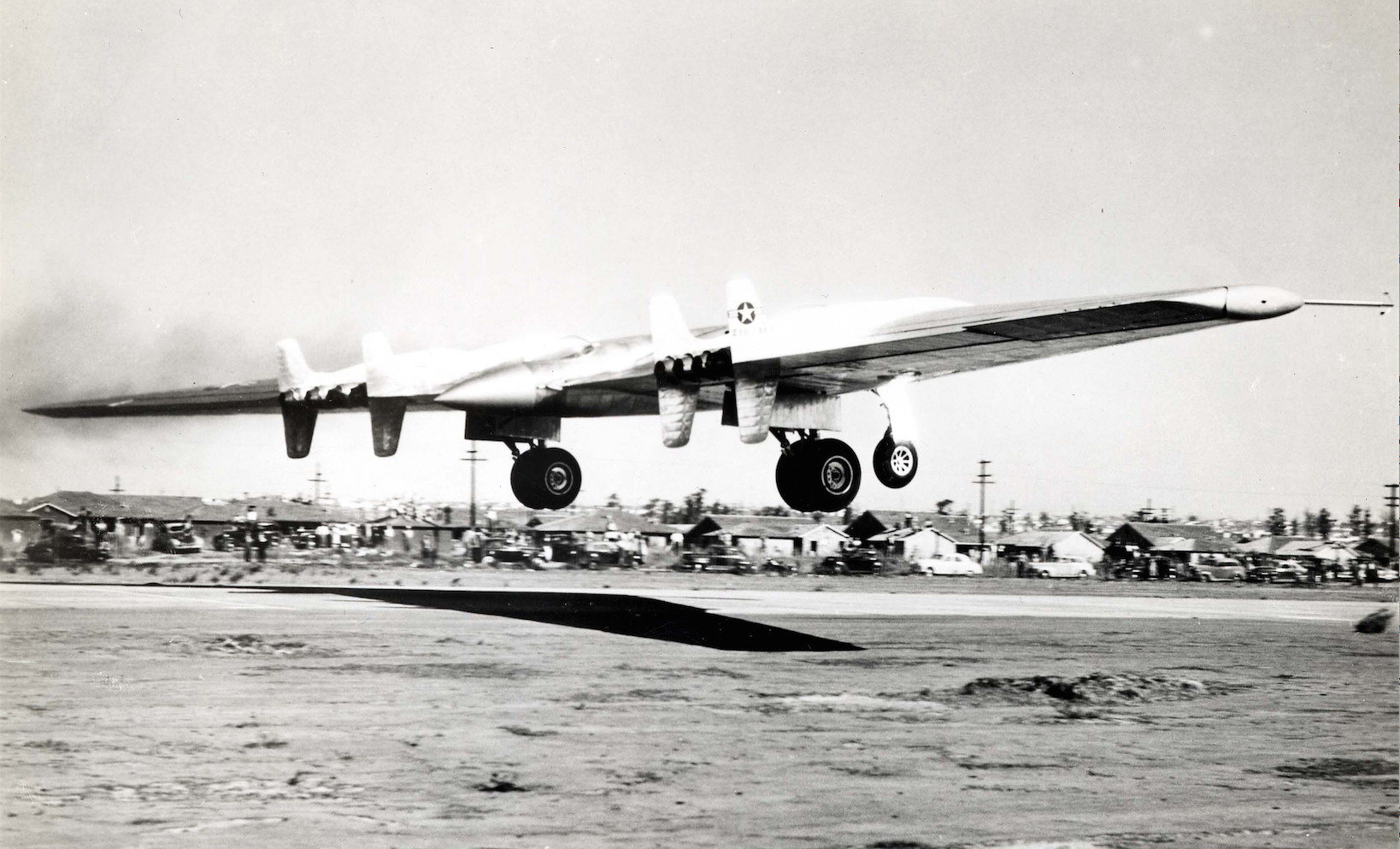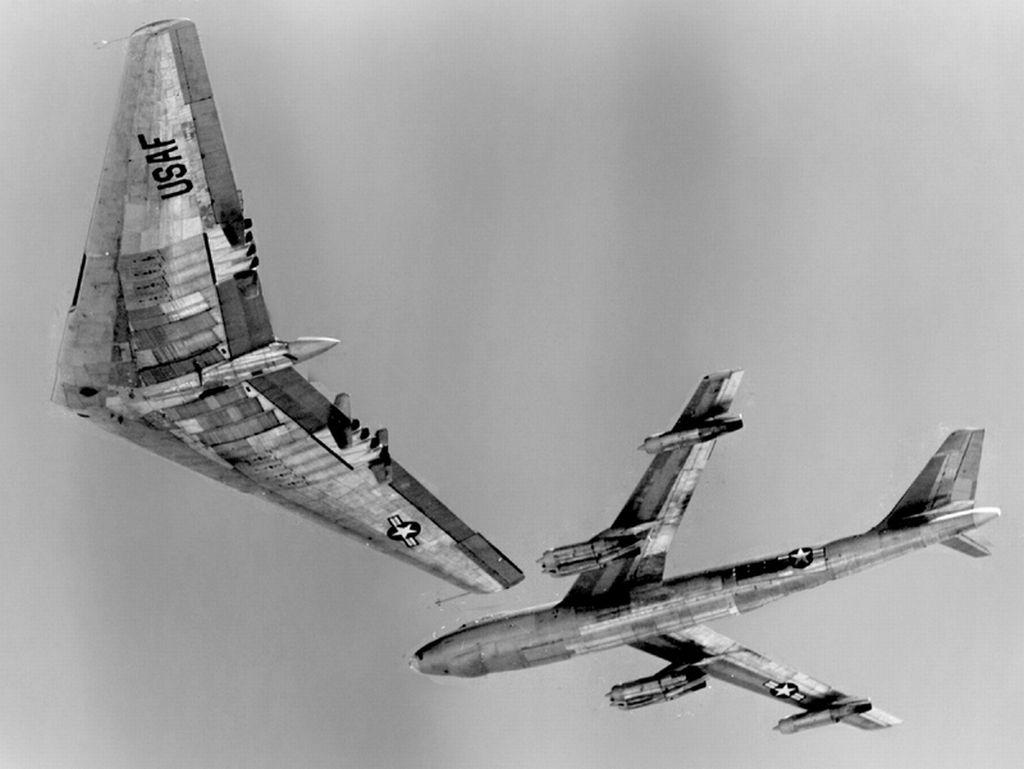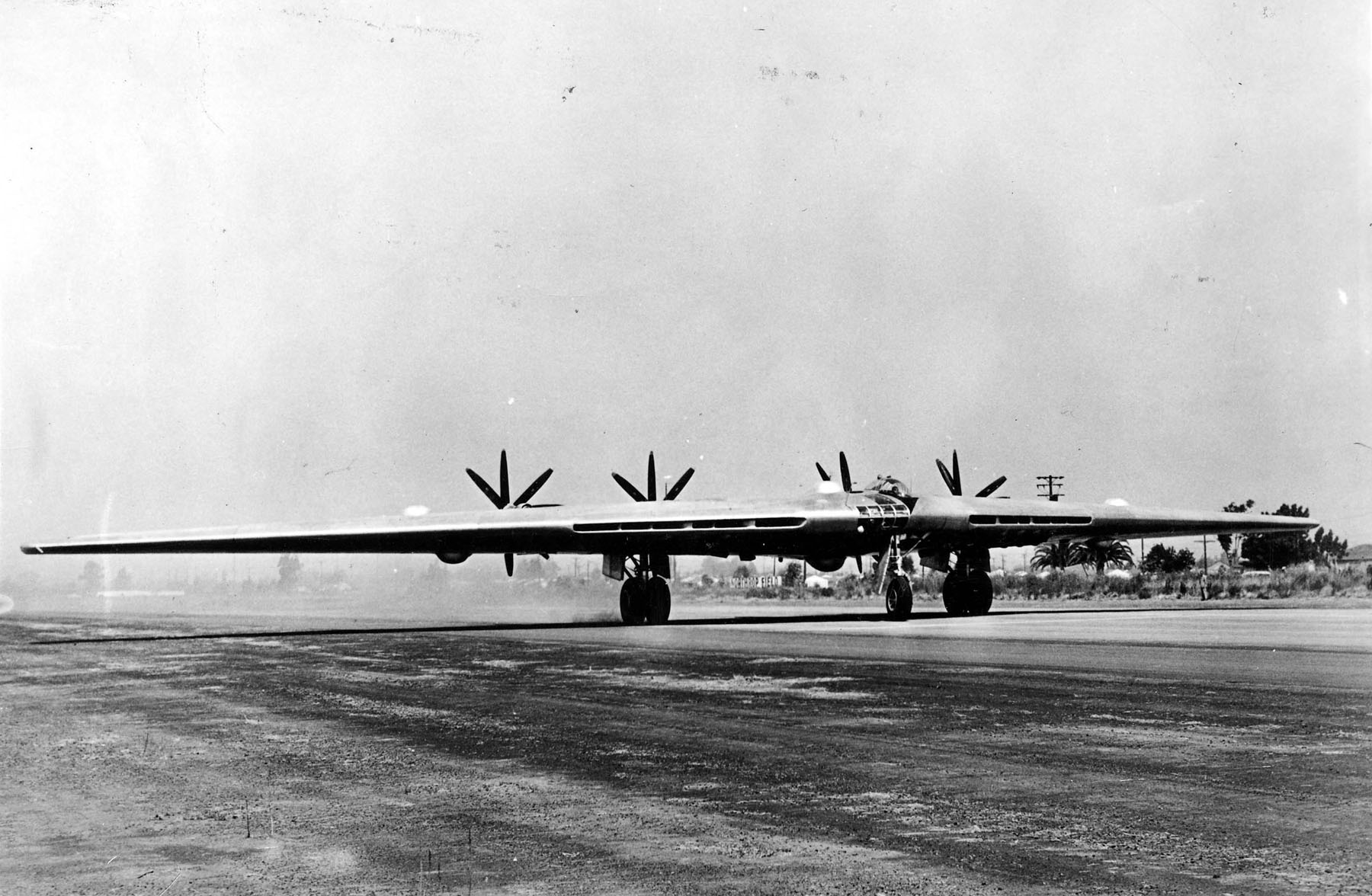
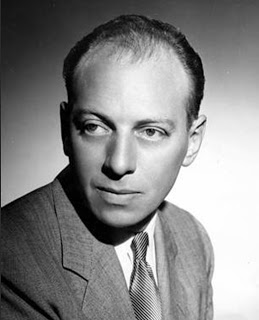
25 June 1946: Northrop Aircraft, Inc., experimental test pilot Max R. Stanley, flight test engineer Dale Schroeder and Orva H Douglas, Jr., flight engineer, made the first flight of the Northrop XB-35 “Flying Wing,” serial number 42-13603. They took off from the factory’s airfield at Hawthorne, California, and flew the prototype bomber to Muroc Army Air Field (now, Edwards Air Force Base). The initial flight lasted 55 minutes.
The Los Angeles Times reported:
Gigantic Flying Wing Triumphs in First Flight
Northrop 110,000-Pound Superbomber Soars 44 Minutes, makes Perfect Landing
Unleashed into the future, a huge and spectral devilfish bellowed up from the earth yesterday and soared eastward toward the morning sun—Northrop’s malevolent Flying Wing superbomber on her maiden test flight, Forty-four minutes later the ship made a perfect landing at Muroc Army Airfield.
Eerie, almost supernatural, she trundled to the west end of Northrop’s mile-long Hawthorne runway as the sun burned away the morning mists.
Thundering Take-off
For 45 minutes she stood motionless, a 172-foot knife blade, while her four 3000 h.p. engines turned eight coaxial pusher propellers into life.Then at 10:29 a.m. her whirling blades fused into blurred disks. Her thunder enveloped the field.
Interminably she seemed to hug the ground as Test Pilot Max Stanley held her charging 110,000 pounds down past the hangars, past the flight line, past the midfield control tower.
Monster Leaves Ground
For 30 thudding heartbeats—and as many seconds—the fantastic silver monster strained at the shackles of earth, hurtling at more than 100 m.p.h. toward the end of the runway.
Then at 3000 feet Stanley eased back the yoke. Sunlight skipped beneath the spinning wheels and the Wing lifted into her element under perfect control.
Vanishes Into Haze
In another 60 seconds she vanished into the haze, her wheels still down as Stanley gently tested her sinews. Below, and to the right of his bubble canopy, Co-pilot Fred C. Bretcher stared ahead through plexiglas in the leading edge, and just aft of the pilot, Engineer O. H. Douglas watched her pulse in the needles of scores of instruments.
In an easy climb, Stanley took the superbomber to 10,000 feet over the flat lands between the San Gabriel Mountains and the sea and then banked her slowly north and inland toward Muroc.
Settles to Runway
At the Muroc test field, the strip was cleared and ready. Spectators watched the incredible ship circle once and then gently settle to the runway as gently as a tuft of cotton and roll to stop in 3000 feet.”She handled beautifully,” grinned Stanley.
The outgrowth of years of engineering, she followed the secret testing of a parade of small wings, and her designer, John K. Northrop, is confident she’ll carry more bombs farther and faster than any other airplane ever built.
Fourteen more of the giants will be built under Northrop’s contract with the Army.
—Los Angeles Times, Vol. LXV, Wednesday Morning, 26 June 1946, Page 1, Columns 5 and 6
The Los Angeles Daily News reported:
Flying wing passes tests
Everybody who had anything to do with it was happy today over the 44-minute maiden flight of Northrop’s flying wing.
The bat-like plane, a 104-ton monster bomber, met all expectations during the 85-mile flight from Northrop Field to Muroc Army Air Base.
“The wing handled just as I expected it would,” veteran test pilot Max Stanley declared after landing the giant ship. “We were delighted with its performance and the plane fully came up to our expectations.”
Officials of Northrop Aircraft, who witnessed the initial take-off, said the flight had justified their confidence in the wing.
The ship, a tailess airplane with a bat-like appearance, is the latest in a series of 15 Northrop designed flying wings and was built at a cost of $13,000,000 for the army.
—Daily News, Wednesday, 26 June 1946, Page 3, Column 1
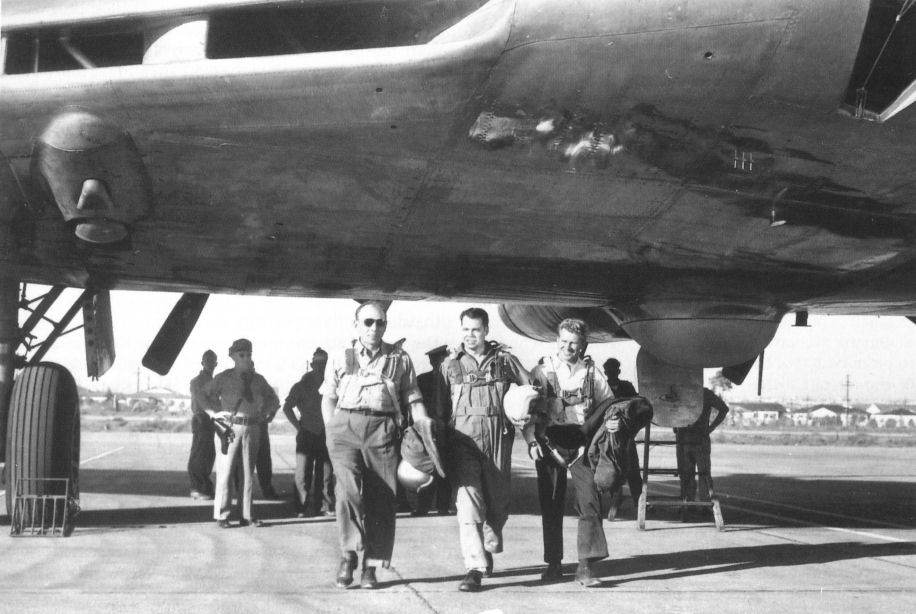
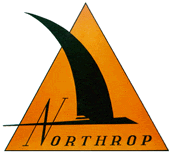
The Wing defined the airplane. It had an aspect ratio of 7.4:1. The wing’s root chord was 37 feet, 6 inches (11.430 meters). The wing was 7 feet, 1.5 inches (2.172 meters) thick at the root. The tip chord was 9 feet, 4 inches (2.844 meters). There was 0° angle of incidence at the root, with -4° of twist, and 0° 53′ dihedral. The leading edge was swept aft 26° 57′ 48″, and the trailing edge, 10° 15′ 22″. The wing’s total area was 4,000 square feet (371.6 square meters).
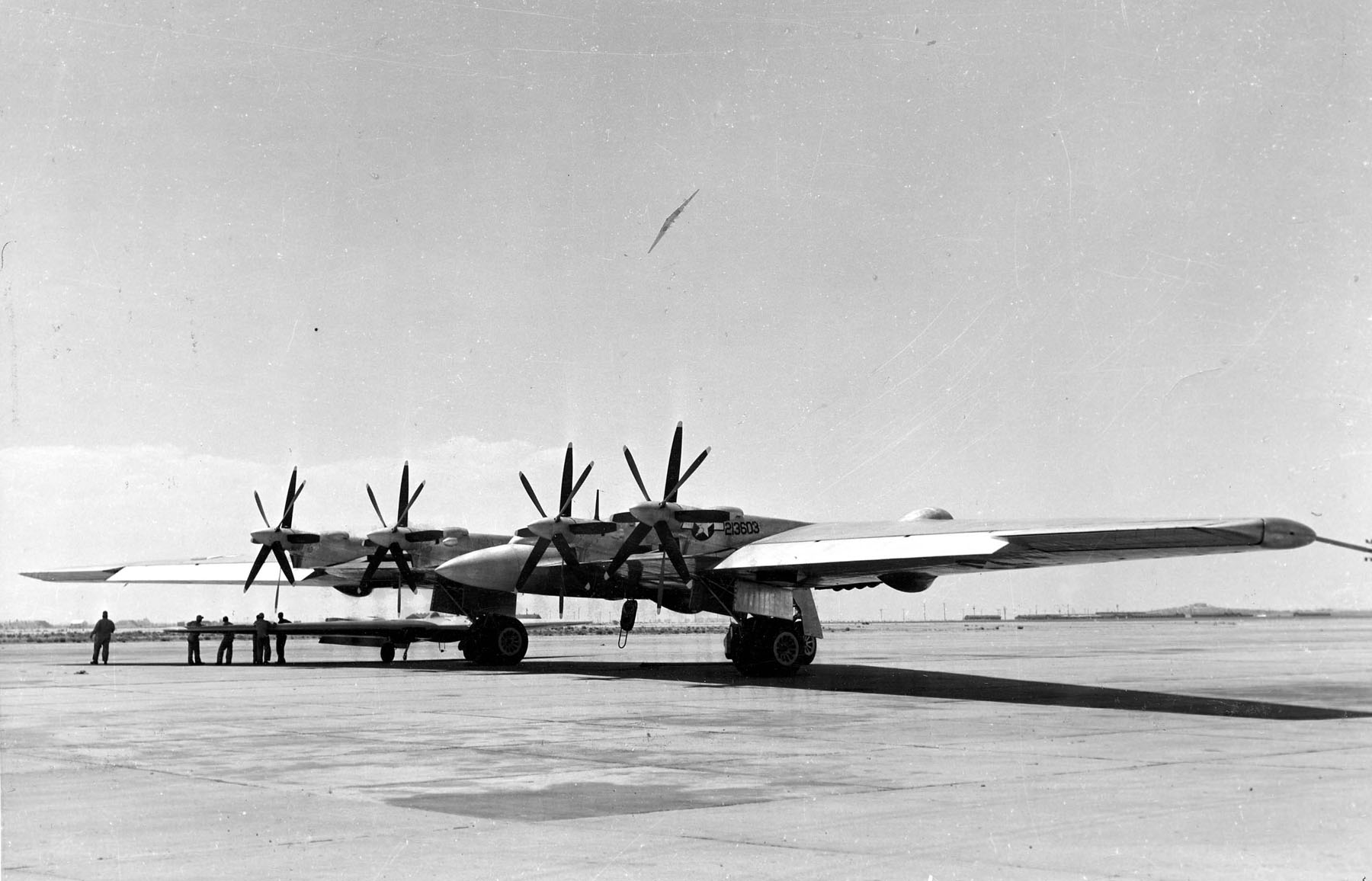

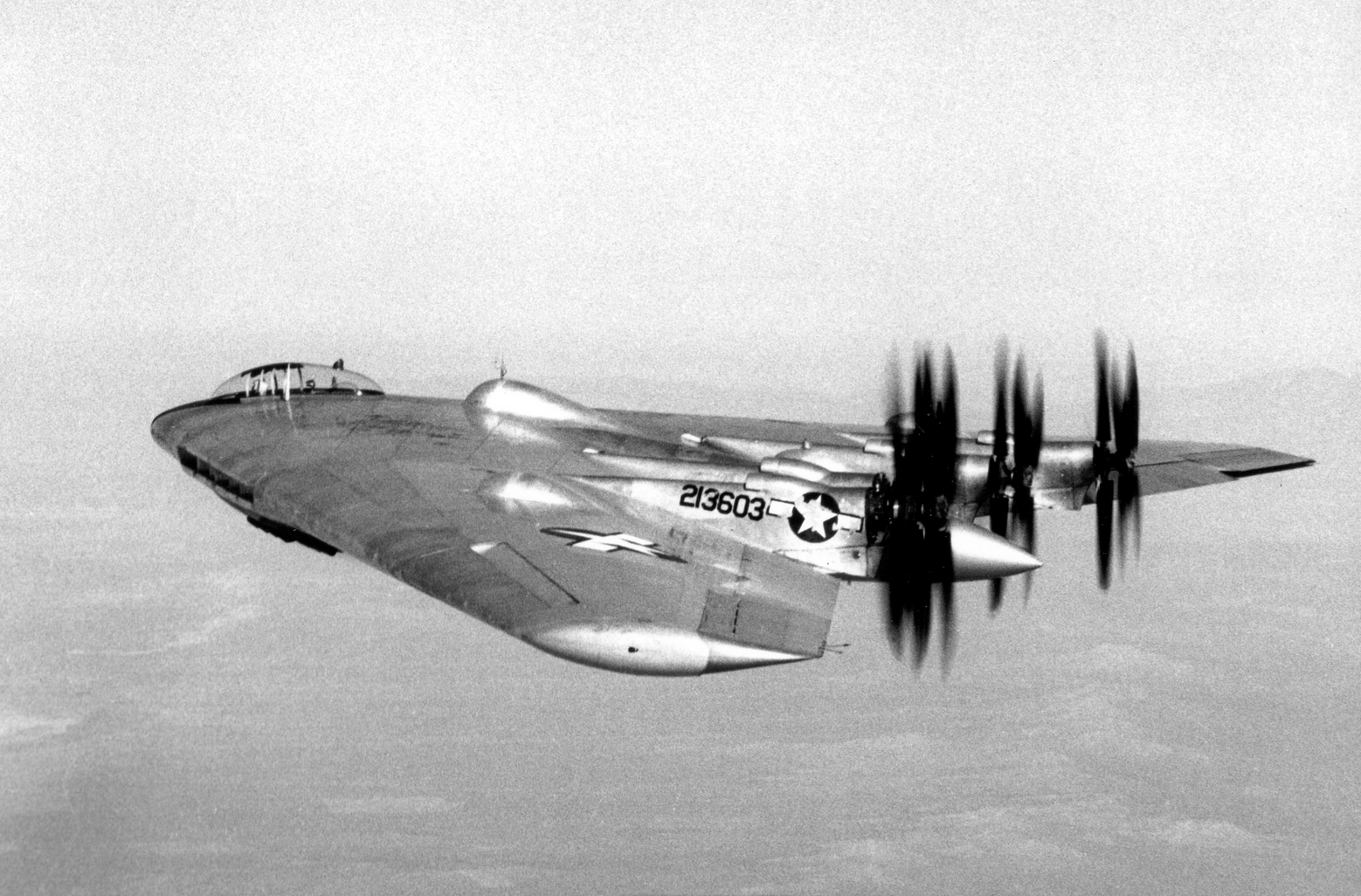
The propellers were dual three-bladed contra-rotating assemblies located in pusher configuration at the wing’s trailing edge. (These were quickly changed to four-bladed propellers, which were smoother in operation and more efficient.)
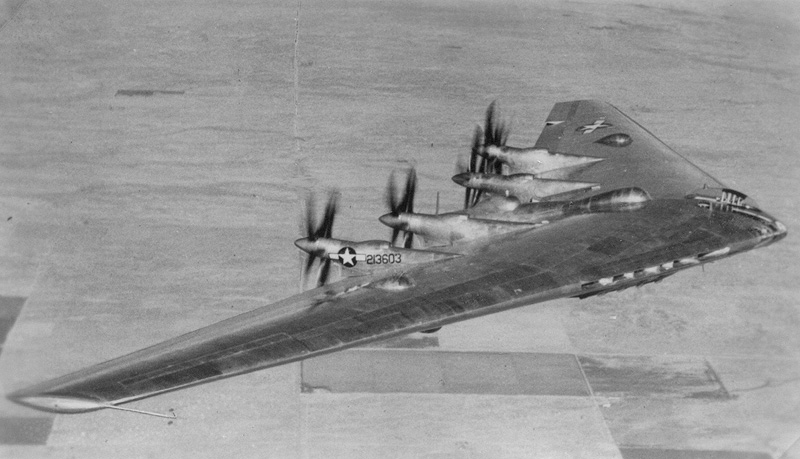
The XB-35 had a cruising speed of 183 miles per hour (295 kilometers per hour) at 39,700 feet (12,100 meters) and maximum speed was 391 miles per hour (629 kilometers per hour) at 35,000 feet (10,668 meters). With a crew of nine, and another six relief crewmembers, the bomber had a range of 8,150 miles (13,116 kilometers).
The production Northrop B-35 would have been armed with twenty .50-caliber machine guns for defense and a maximum bomb load of 51,200 pounds (23,223 kilograms).
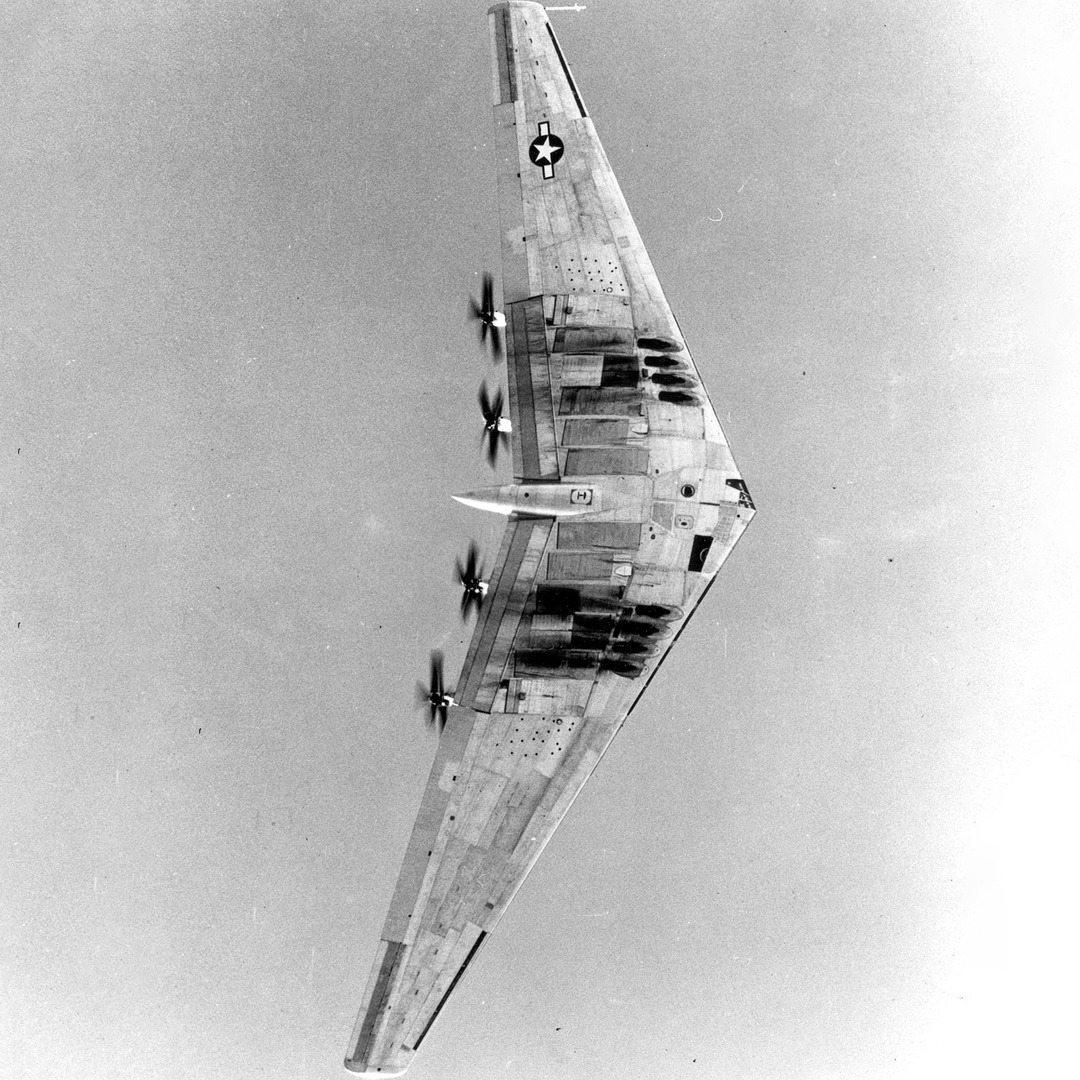
The XB-35 was plagued by unresolved problems with the propeller gear boxes which eventually forced Jack Northrop to ground the aircraft until the engine and propeller manufacturers could come up with a solution, which was to change from piston to turbojet engines. That version became the YB-49. Because of the continuing problems, though, 42-13603 was grounded after only 19 flights, and with its sister ship, XB-35 42-38323, was scrapped in August 1949.
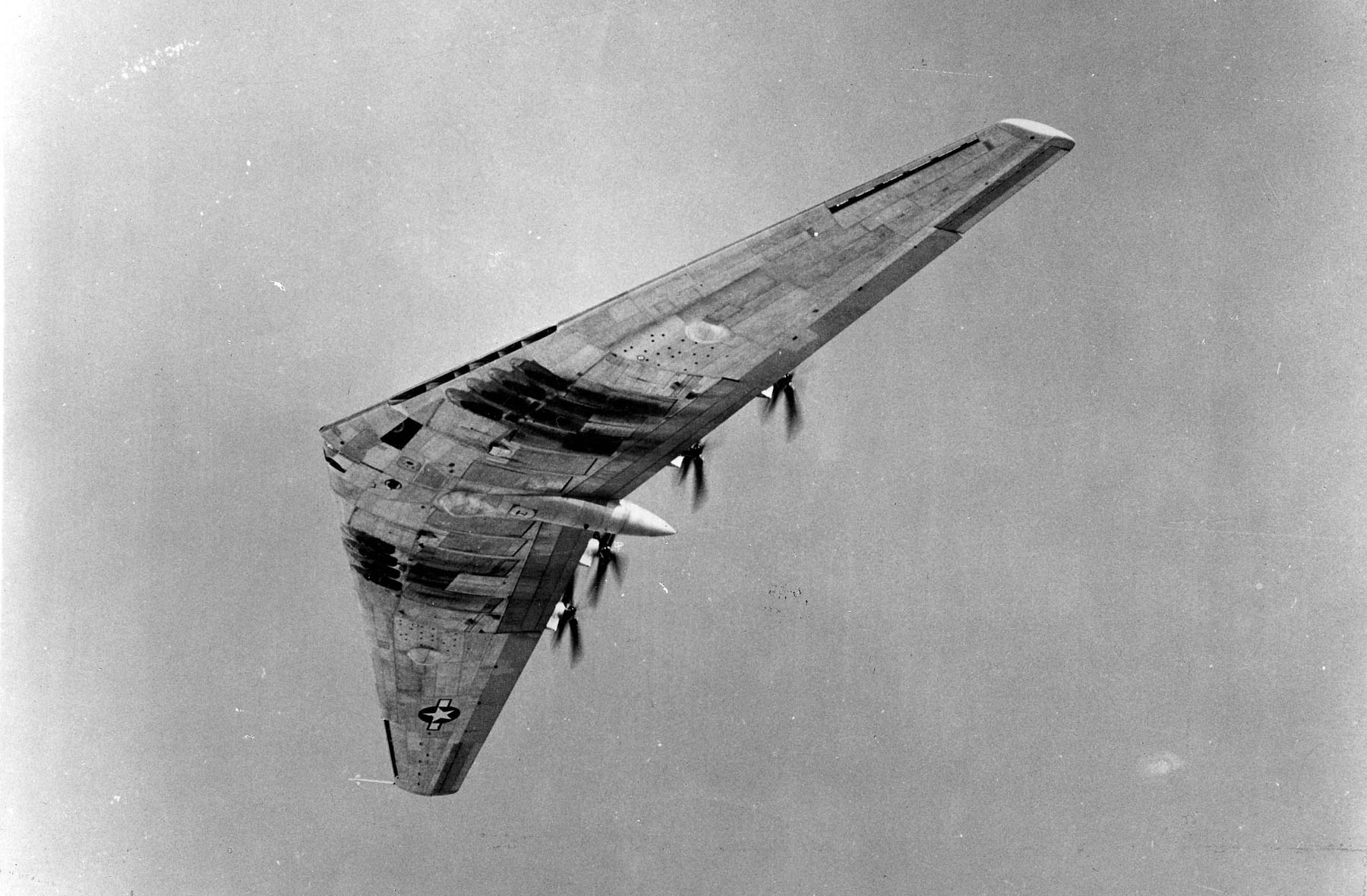
© 2022, Bryan R. Swopes
